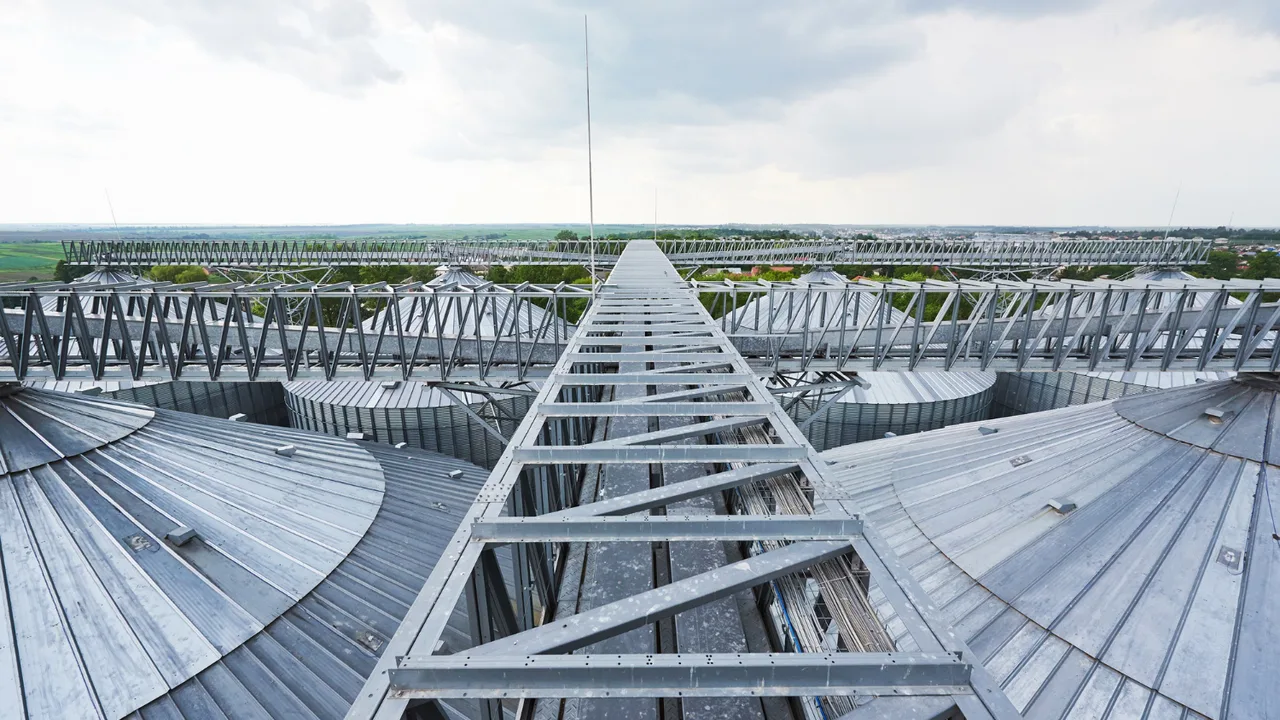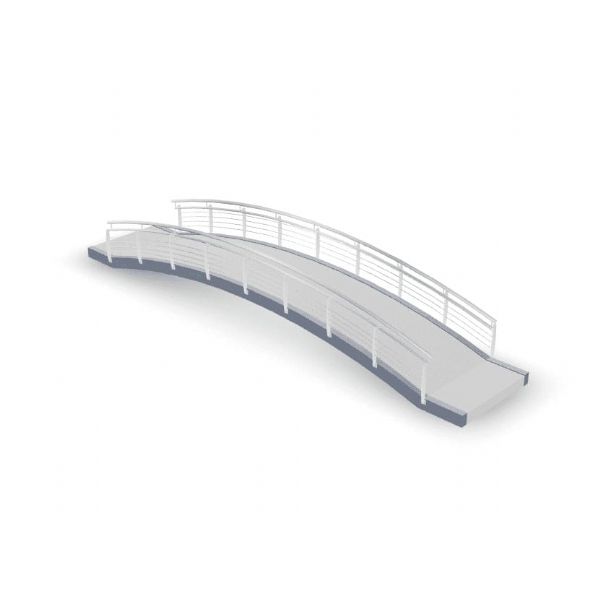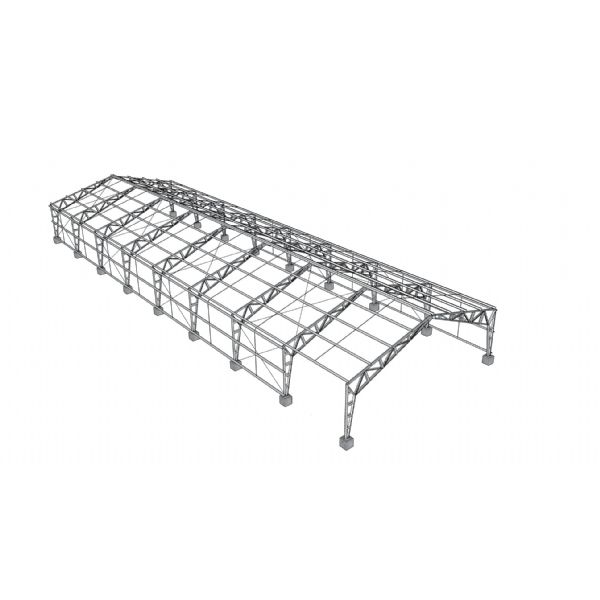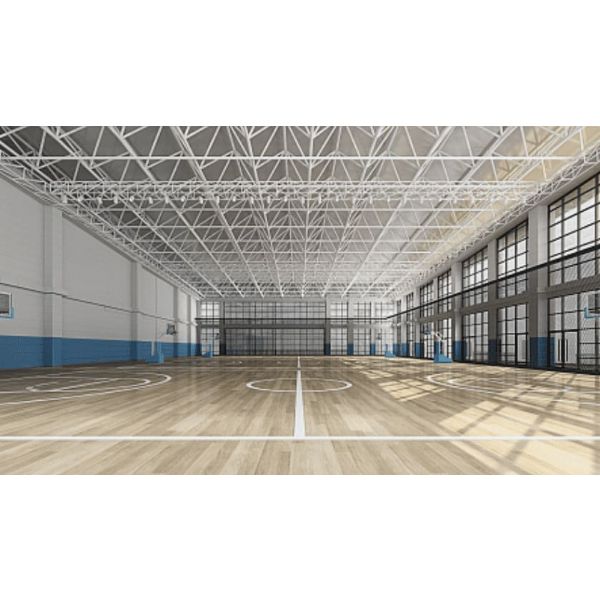In modern agriculture, efficiency is everything. Farmers are no longer just growers—they are operators of complex, technology-driven enterprises. To meet the growing demand for food production while minimizing costs, the structures that support these operations must evolve. Steel framed agricultural buildings have become the cornerstone of this evolution, offering farmers durable, adaptable, and sustainable solutions that outperform traditional wooden or concrete barns in nearly every aspect.
From machinery storage to livestock housing and grain facilities, steel structures bring reliability, safety, and operational flexibility to the heart of farm management. This article explores how these modern structures are transforming agricultural productivity and why they represent a long-term investment in farm sustainability.
Understanding Steel Framed Agricultural Buildings
Definition and Core Components
Steel framed agricultural buildings represent the next generation of farm infrastructure — purpose-built to withstand demanding environmental conditions while providing flexible spaces for storage, livestock, or machinery. Unlike traditional timber barns or block-built sheds, these modern agricultural structures rely on precision-engineered steel frames as their primary load-bearing skeleton. The framework typically consists of columns, rafters, beams, purlins, and trusses made from high-grade hot-rolled or cold-formed steel sections, which are assembled into a rigid, weather-resistant system.
These frames are then complemented with wall cladding, roof sheeting, insulation systems, gutters, and ventilation solutions to create a fully enclosed, functional building envelope. Depending on the building’s purpose, designers can integrate skylights for daylighting, ridge vents for airflow, or translucent panels to improve visibility and reduce artificial lighting needs.
One of the defining advantages of steel construction is its ability to span large distances without internal support columns. This clear-span design provides open and unobstructed interior layouts — ideal for housing large machinery, bulk storage of feed or grain, or even creating free-movement zones for livestock. Whether used for dairy, grain, poultry, or equipment operations, steel-framed solutions enable farmers to maximize usable floor space and streamline their workflow.
Additionally, modern agricultural steel systems are engineered with precision manufacturing techniques that ensure dimensional accuracy, load optimization, and easy on-site assembly. Every beam and joint is pre-drilled, pre-cut, and quality-tested, significantly reducing construction time and minimizing waste on site. As a result, farmers gain access to high-quality, low-maintenance structures that can last for decades while supporting evolving agricultural operations.
Types of Agricultural Steel Structures
Steel Frame Barns
At the heart of many farms, steel frame barns provide safe and efficient housing for animals and feed. These barns are designed for maximum ventilation, hygiene, and durability — essential for maintaining animal health and productivity. Unlike wooden barns, which are prone to rot, insect damage, and fire hazards, steel barns are resistant to moisture, pests, and combustion. Their smooth internal surfaces also simplify cleaning, reducing the spread of bacteria and ensuring compliance with biosecurity standards.
Farmers often customize steel barns with insulated panels to regulate temperature or install curtain wall systems to improve airflow in warm climates. With their long service life and minimal maintenance needs, steel barns are a practical investment that enhances animal welfare while lowering operating costs over time.
Machinery Sheds
Modern farms depend on expensive machinery — tractors, harvesters, seed drills, balers, and more. Protecting these assets is vital to long-term profitability. Steel machinery sheds provide secure, wide-span coverage where large vehicles can be parked, repaired, or stored year-round. These buildings are engineered to support heavy-duty doors, skylights, and gantry cranes for mechanical work, giving farmers easy access for maintenance and cleaning.
The structural stability of steel frames ensures that even under strong wind loads or heavy rain, machinery remains safe and dry. Additionally, by minimizing UV exposure and corrosion risk, steel sheds significantly extend the operational lifespan of agricultural equipment — reducing maintenance expenses and downtime during peak seasons.
Grain Storage Buildings
Preserving crop quality between harvest and distribution is a critical factor in farm profitability. Steel grain storage buildings deliver controlled environments that maintain the optimal balance of temperature and humidity. Unlike concrete or wooden silos, steel’s non-porous surface prevents mold growth and pest infiltration. The structures can be fitted with ventilation ducts, moisture sensors, and aeration systems to ensure even drying and safe long-term storage.
These facilities can also be designed as multi-bay or modular systems, allowing farmers to expand storage capacity as production grows. By integrating modern insulation and energy-efficient ventilation, steel grain stores not only reduce post-harvest losses but also lower operational energy costs over time.
Equestrian and Riding Arenas
Equestrian operations require spacious, unobstructed arenas for riding, training, and events — and steel framed agricultural buildings meet these needs perfectly. Their open-span design eliminates interior columns, providing a clear line of sight and freedom of movement for horses and riders. The versatility of steel framing also allows designers to incorporate natural lighting through translucent roof panels and create well-ventilated, dust-controlled environments that improve both comfort and safety.
Whether for private use, commercial training centers, or competition facilities, steel riding arenas offer longevity and minimal maintenance. Their adaptability means they can be enclosed for year-round use or left partially open for natural airflow during summer months.
Multi-purpose Farm Workshops
Every efficient farm needs a workspace for repairs, fabrication, and equipment maintenance. Steel workshops are ideal for these applications because they provide a robust and fire-resistant structure capable of handling mechanical activities, welding, and heavy tool installations. These buildings can easily incorporate mezzanine floors, storage racks, or office sections, making them multifunctional and space-efficient.
Prefabricated steel workshops can be installed quickly and equipped with modern electrical systems, skylights, and energy-saving insulation. The open interior design supports flexible layout configurations — from machinery assembly to crop packaging areas — improving daily workflow and long-term operational flexibility.
Additional Applications
Beyond the common types, steel framed systems are also used for a growing number of specialized agricultural purposes:
- Cold storage facilities for dairy, meat, or vegetables, ensuring consistent temperature control.
- Greenhouses with lightweight steel trusses that support polycarbonate or glass panels.
- Poultry houses designed with insulation, ventilation, and hygiene-friendly materials for intensive production.
- Feed processing plants or packaging areas where heavy equipment and conveyor systems require stable roof support.
Each of these applications benefits from the same principles — structural strength, cost efficiency, ease of maintenance, and design flexibility — making steel framed agricultural buildings a universal solution for both small-scale and industrial farming operations.
Advantages of Steel Framed Agricultural Buildings

1. Strength and Durability in Harsh Farm Environments
Farms face constant exposure to moisture, chemicals, and weather fluctuations. Steel framing resists corrosion, rot, and termite attacks that commonly damage wooden structures. With proper coatings such as galvanization or epoxy paint, these buildings can last over 50 years with minimal structural maintenance.
Additionally, steel’s superior tensile strength allows for larger roof spans and higher load capacities, meeting national building codes for snow, wind, and seismic resistance. Farmers gain confidence knowing their buildings can withstand heavy use and extreme conditions.
2. Cost-Effectiveness and Speed of Construction
Prefabricated steel building systems are designed for rapid assembly. Components are pre-cut, pre-drilled, and ready for on-site installation, dramatically reducing construction time and labor costs compared to conventional materials. This quick turnaround allows farmers to get operations running sooner—whether it’s a new machinery shed before harvest season or a livestock barn before winter.
Furthermore, steel requires less long-term upkeep. There’s no need for repainting, pest treatment, or replacing rotted sections. When factoring in its low maintenance, steel delivers one of the best cost-per-year values among all building materials.
3. Flexible Design and Expandability
Every farm evolves over time. Steel’s modularity enables easy expansion by adding bays, increasing roof height, or extending the structure without major reconstruction. A machinery shed today can be converted into a processing facility or integrated with additional storage space tomorrow.
Design flexibility also extends to aesthetics and functionality—farmers can choose between insulated panels, translucent roof sheets for daylighting, roller shutters, or even integrated solar roofs. The ability to tailor a structure to specific farm operations directly contributes to long-term efficiency.
4. Energy Efficiency and Sustainability
Modern steel framed agricultural buildings can be equipped with high-performance insulation, natural ventilation, and energy-saving materials. Steel roofs reflect sunlight, reducing heat absorption during summer, while insulated wall panels maintain thermal comfort for animals and stored crops.
Moreover, steel is 100% recyclable, making it one of the most sustainable materials available. Integrating solar panels or rainwater harvesting systems further enhances the building’s eco-efficiency. In sustainable agriculture, steel buildings not only reduce operational energy demand but also align with environmental goals.
5. Better Farm Organization and Workflow Efficiency
Agricultural steel structures allow clear zoning—storage on one side, livestock on another, and machinery in a designated bay. This organized layout minimizes travel time between operations and reduces contamination risks between feed, animals, and chemicals.
Large door openings and unobstructed interior spans make movement of vehicles and materials more efficient. Farmers experience smoother logistics and a safer, cleaner work environment, leading to measurable gains in daily productivity.
Design Considerations for Agricultural Steel Structures
Key Structural Elements
The most common framing systems include portal rigid frames for rectangular buildings and truss systems for wide spans. Proper roof pitch ensures adequate rainwater drainage, while purlins and girts maintain stability. For ventilation, ridge vents and sidewall louvers are often integrated to maintain airflow and control humidity.
Insulation and Environmental Control
Temperature and moisture are critical in agricultural storage and livestock facilities. Insulated sandwich panels, vapor barriers, and reflective foil systems help maintain a controlled indoor climate. In barns, effective ventilation reduces heat stress and maintains animal comfort, directly influencing productivity and health.
Site Planning and Orientation
Correct site planning enhances long-term performance. Buildings should be oriented to optimize wind direction and sunlight exposure, with adequate drainage to prevent water accumulation. Considering future expansions during the planning stage ensures that new facilities can be added seamlessly.
By carefully addressing design details, farmers can ensure that every square meter of their steel framed agricultural buildings contributes to smoother operations and lower lifecycle costs.
Comparing Steel vs Traditional Farm Building Materials
Steel vs Wood
Wood has long been a staple in agricultural construction, but it suffers from structural degradation over time. Moisture leads to rot, termites cause damage, and fire risk is always present. Steel eliminates these vulnerabilities. Its non-combustible nature enhances safety, and its resistance to biological decay ensures longevity even in high-moisture environments.
Maintenance costs for wooden barns can exceed thousands of dollars annually, while steel buildings often require little more than periodic inspections and cleaning. This makes steel the more reliable and economical choice for modern farms.
Steel vs Concrete
Concrete buildings offer durability but lack flexibility. They are heavy, time-consuming to build, and expensive to modify once complete. In contrast, steel structures are lightweight, allowing simpler foundations and faster setup. Farmers can easily extend or relocate steel buildings as their operations evolve.
Additionally, steel’s smooth surfaces and precise engineering mean better sealing against pests and moisture, critical for grain or feed storage. Concrete may absorb moisture and crack over time, while steel remains dimensionally stable.
Long-Term Operational Benefits
When comparing life-cycle costs, steel outperforms both wood and concrete. Its combination of low maintenance, recyclability, and adaptability ensures superior return on investment. The operational benefits extend beyond cost: farmers enjoy safer, more organized, and more energy-efficient spaces that support modern equipment and automation.
Case Studies and Real-World Applications
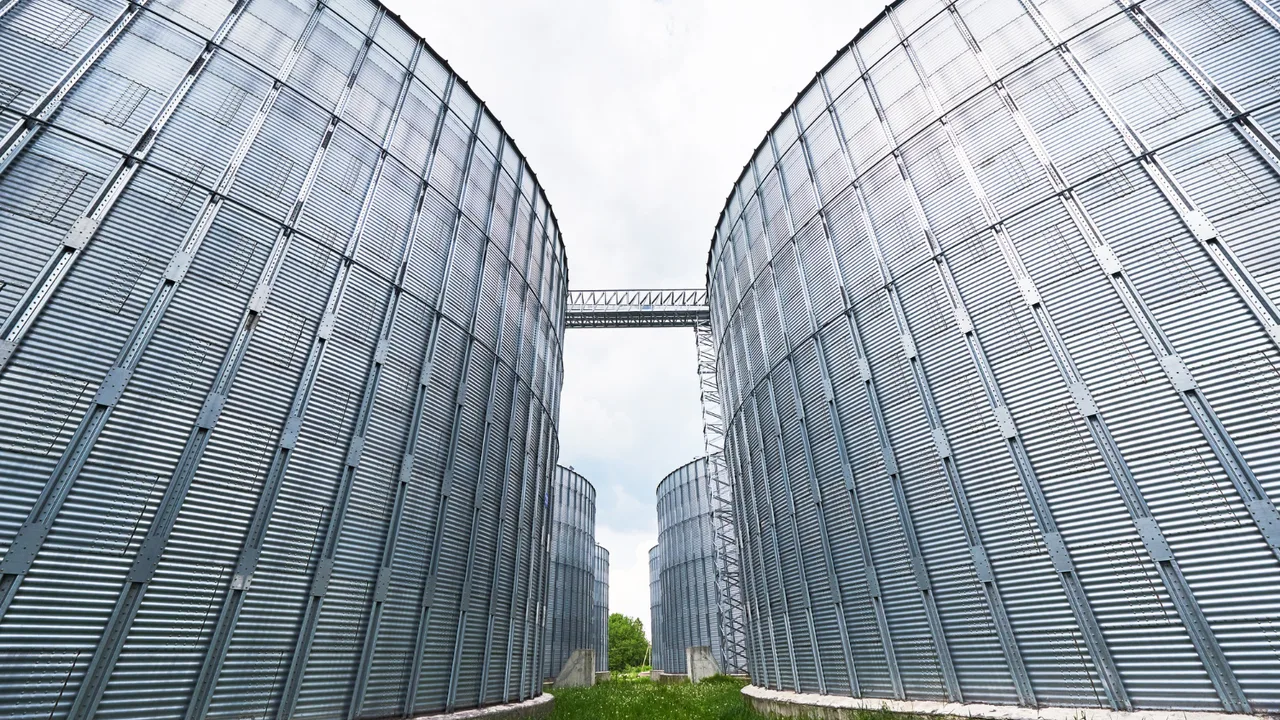
Livestock Housing Project
A dairy farm in Southeast Asia transitioned from traditional timber barns to steel framed agricultural buildings designed with insulated roofing and mechanical ventilation. The result was a 15% increase in milk production due to better temperature control and reduced heat stress on animals.
Grain Storage Facility Upgrade
In Europe, a family-run grain farm replaced outdated silos with a pre-engineered steel warehouse that included natural ventilation ridge vents and high-density insulation. Post-harvest losses dropped by 30%, and annual maintenance costs were cut in half.
Farm Workshop and Equipment Storage
In Australia, a multi-bay steel workshop allowed farmers to consolidate their machinery maintenance, welding, and fabrication areas under one roof. The organized setup improved tool access, reduced travel time between sheds, and simplified safety compliance.
Maintenance and Longevity Strategies
Routine Inspections
To ensure long service life, regular inspection of bolts, joints, and protective coatings is essential. Early detection of corrosion or deformation prevents small issues from escalating. Most steel buildings only require bi-annual checks.
Protective Coatings and Treatments
Galvanized or powder-coated finishes protect structural members against moisture and fertilizers. Applying an additional layer of anti-corrosion paint every 10–15 years can extend lifespan by decades, especially in coastal or humid regions.
Upgrading and Retrofitting Options
Farmers can modernize existing steel structures with new cladding, skylights, or solar power systems. Retrofitting older barns into cold storage or packaging facilities is far easier with steel than with other materials, offering extended functional life without demolition.
Future Outlook: Smart Farming and Steel Integration
The next wave of agricultural innovation includes automation, robotics, and IoT-based monitoring. Steel framed agricultural buildings provide the structural reliability needed to integrate these technologies. Sensors can monitor humidity, temperature, and livestock activity, while steel framing easily supports cabling, lighting, and drone systems.
As precision agriculture expands, steel’s role as a high-tech infrastructure backbone will grow. Prefabricated modular buildings will allow farms to add new units for data centers, processing, or packaging without disrupting ongoing production.
Conclusion: Building the Future of Sustainable Farming
Efficiency, sustainability, and adaptability define modern agriculture. Steel framed agricultural buildings meet all three demands by providing long-lasting structures that are cost-effective, energy-efficient, and customizable to every farming need.
Unlike traditional barns that demand constant maintenance, steel buildings stand as low-cost, high-performance assets for decades. They enable cleaner operations, safer environments for livestock and workers, and faster workflow across all farming activities. As global food demands rise, investing in steel structures is not just a construction decision—it’s a strategy for sustainable growth.
From small family farms to large industrial agribusinesses, the transition to steel reflects a forward-thinking mindset: one that values productivity, resilience, and environmental responsibility. In the evolving world of agriculture, steel isn’t just framing buildings—it’s framing the future.
